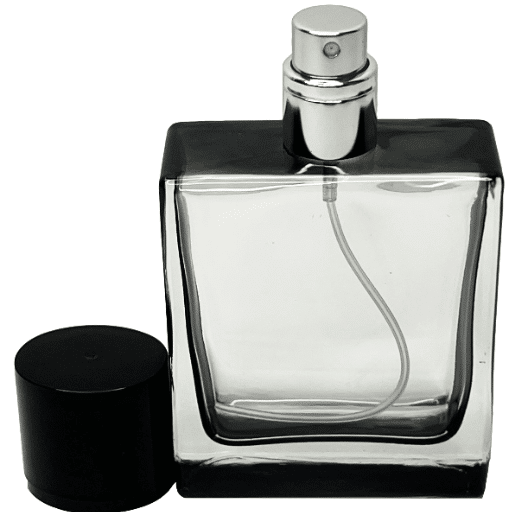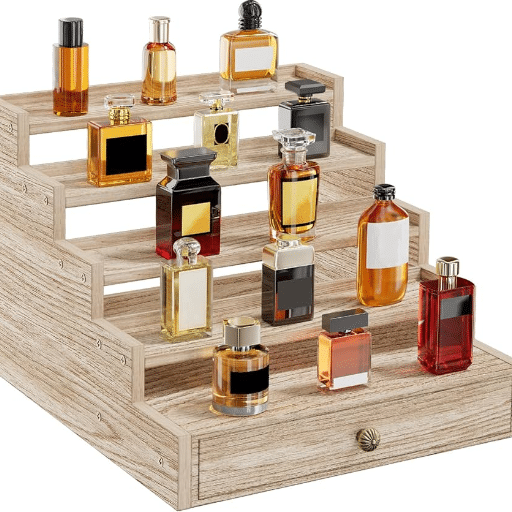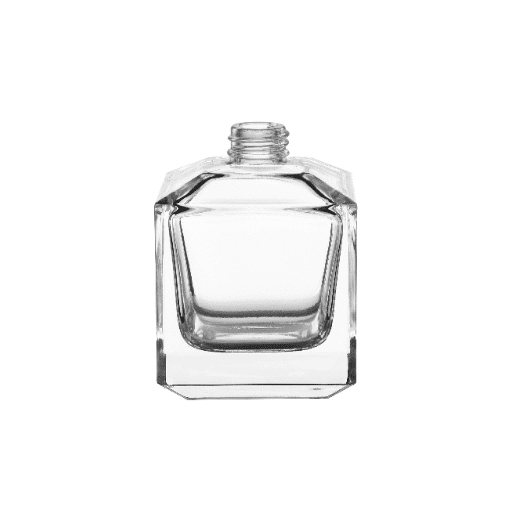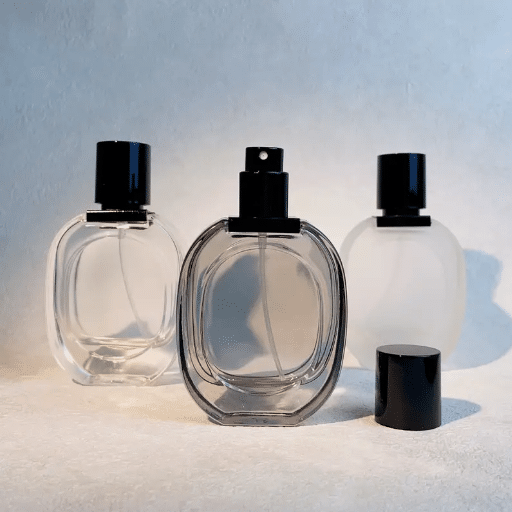The making of perfume bottles was known to be the world’s most incredible art and craft; therefore, the very essence of its charm starts with the bottle. Perfume bottles are a visual delight and very tactile art pieces that complement the experience of smelling the fragrance inside. Early on, these bottles tell stories, arouse feelings, or stamp the image of a brand much before the perfume is opened. In this article, we shall dive into the beguiling world of perfume bottle artistry, time to pry open the cabinets of ingenuity and craftsmanship that these small yet mesmerizing wonders call home. Whether you are a collector of scent bottles, a guru on perfumes, or just someone who appreciates design, here is why these bottles are etched into memory just as much as the fragrances themselves.
Introduction to Unique Perfume Bottle
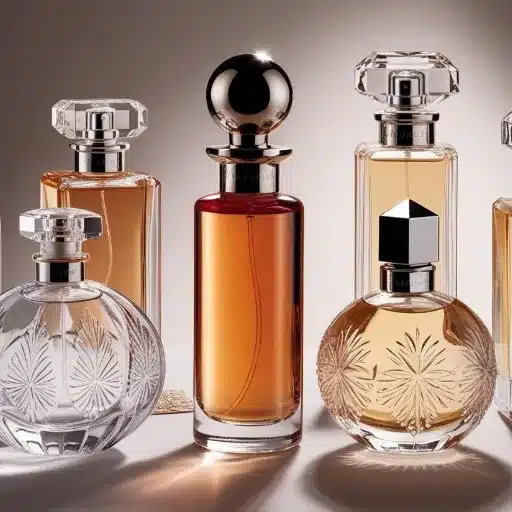
Perfume bottles stand, or rather sit, as good examples of art in function, designed to captivate and express the essence of the fragrance therein visually. Each bottle distinguishes itself, reflecting the brand’s character, often imparting cultural, historical, or natural significance as inspiration. Designers have the painstaking task of producing bottles that will remain in the consumer’s memory, symbolizing grandeur and class, while concealing a scent worthy of protection. From assertive geometric patterns to fine hand-blown glasswork, every detail tells of an intention meant to resonate with the consumer and enrich their experience of the fragrance.
The Allure of Perfume
Perfume is fused with artistry and science. From the point of view of a master perfumer or a “nose,” it’s a perfect blend of science, art, and chemistry, straightforwardly mixed with the perception of olfactory stimuli. One begins with choosing raw materials, which vary from essential oils and natural extracts to synthetic scents. These are then combined to create unique compositions. The current trend is towards sustainability, as brands opt for green practices, choosing their ingredients from legitimate sources of conscious harvesting, which then embodies the whole ethos of this consciousness. This change helps preserve the art of perfumery and, at the same time, ensures it is done with good ethics to produce pleasant scents.
Significance of Bottle Design
The very bottle is an integral part of a fragrance’s overall appeal and its commercial success. Such bottles, in addition to serving as containers, are almost always visual metaphors for the state of the perfume, conveying some grandeur or elegance, while other, less ornate bottle designs convey humility and grace. When consumers associate bottle designs or traditional packaging with uniqueness and exclusivity, their buying decisions are significantly influenced. Likewise, in sustainable packaging, remarkable comprehensiveness has recently reached the height of recyclable material products and refillable bottles; thus, a perfume bottle is still more than just packaging, but an excellent instrument for storytelling in marketing and consumer experience.
Defining Unique Perfume Bottles
Unique bottles tend to strut a fine blend of art, compromise, and practicality. Their unconventional shapes and intricate designs present visual displays on shelves; in some cases, compatibility with rare materials takes precedence. Factors like limited editions, hand-blown glass, or fine engraving can bestow that glamour and allure, ensuring that such bottles appeal to niche markets and collectors. Recent trends have cast the spotlight on sustainability, with an emphasis on ensuring that innovative and unique packaging efforts now utilize components that can biodegrade or be refilled, thereby reducing environmental impact. The trifecta of beauty, craftsmanship, and green innovation defines what makes a perfume bottle worthy of distinction today.
Exploring Perfume Bottle Designs
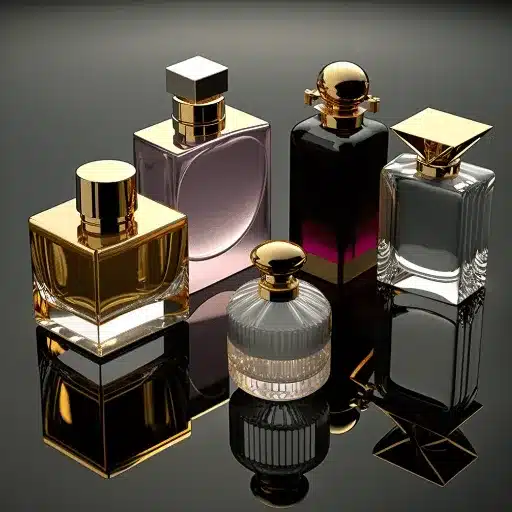
Effective perfume bottle design is a blend of aesthetics, functionality, and brand storytelling. Any perfume bottle should, first and foremost, perform its basic function well: to store the perfume. It should be well-designed, easy to hold, and pleasant to use. On the aesthetic scale, the shape, color, and detailing of the bottle should appeal to the target audience to some extent, a level that resonates with the mood or ideal of a scent. For example, minimalist might suggest modern and slick, while ornate might suggest luxurious and delicate.
Furthermore, a practical design should combine materials and craftsmanship to enhance the bottle’s values: the selected types of glass and their tasteful decorations all contribute to giving a further perception of value. A second perspective values sustainable concerns for the use of materials or design concepts, such as bottles that are recyclable or can be easily refilled, forging a bond with today’s increasingly eco-aware clientele and simultaneously demonstrating forward-thinking.
Innovative Glass Bottle Designs
The mainstream trends in glass bottle design continue to explore intersections of aesthetics with utility and sustainability. Frosted or lightly colored glass will imbue a cooler kind of aesthetic and also protect the product from UV light if the product is light-sensitive. These days, the focus of attention is shifting towards minimalist styles with clean lines and pleasing aesthetics, appealing to the modern and contemporary consumer. Discussing smart gadgets means mentioning smart technology in the same breath. Good examples would be NFC chips embedded in the bottle caps, used for authentication and interaction via digital content. Another motive on the sustainability agenda sees glass bottles made from upcycled materials or post-consumer recycled glass challenging the standards to meet a smaller footprint on the environment, a view gaining much global footing on packaging. This marriage between art and tech is surely telling of how glass designs have evolved to cater to what design needs and what functional needs and the environment at large.
Artisan Craftsmanship in Perfume Packaging
Perfume packaging by artisan talent merges architecture and art with the keen eye of craftsmanship to create both spectacularly functional and fondly aesthetic pieces. Artisans employ traditional methods of glassblowing to hand-etch and intricately engrave bottles, transforming them into unique art realizations. These are further enhanced with fine materials such as crystal, metals, and sustainable woods, bestowing layers of elegance. Many high perfume brands now collaborate with master artisans for the creation of bespoke designs that tell the story of the scent and the cultural heritage of the brand. Artisan boxes are also gaining popularity in sustainable luxury, with consequences that encourage the use of greener methods and materials, thereby amplifying the attractiveness of artisan packaging. These designs protect and maintain the contents inside, while also enhancing the unboxing experience, turning every bottle into a collector’s item imbued with artistry and innovation.
Impact of Design on Fragrance Experience
The design of a fragrance bottle ultimately sets the tone while shaping the customer’s perception of the scent long before it has even been tasted. Studies have found that beautiful-to-the-eye packaging evokes an emotional association that builds expectation and complements the overall sensory experience. Intricately designed, exquisite bottles speak of elegance, highlighting the exclusivity and quality of the fragrance. On the other hand, a minimalist and contemporary style appeals to buyers who consider themselves simple yet elegant and prefer to express their own identity.
Regarding materials and innovations, discarded glass and biodegradable components have emerged as a significant voice in the design world, with sustainability being a pressing issue. These eco-friendly methods stand to garner the favor of a consumer, thus increasing brand loyalty, while at the same time, applauding great environmental consciousness. Therefore, designing is being incorporated into the fragrance experience, aesthetic and pragmatic, which creates beautiful memories far beyond the mere scent.
Materials Used in a Unique Perfume Bottle
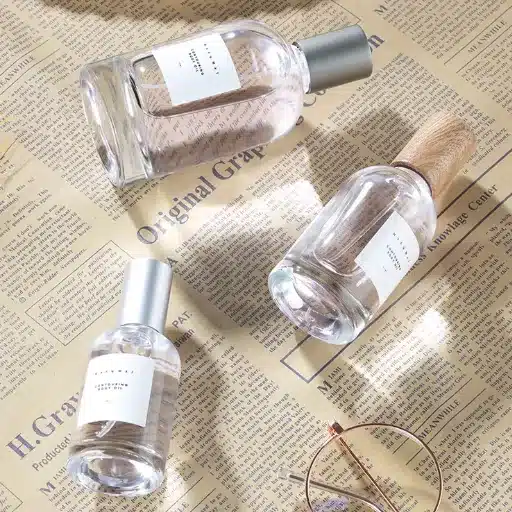
Unsurprisingly, the majority of materials possess multiple properties suitable for creating unique designs, bottle integrity, and function. The most used materials include:
- Glass: Known for transparency and especially its capacity to be crafted into complex shapes, glass imparts an elegant yet practical feel to any object. It also protects the perfume from chemical reactions.
- Metal: Aluminum, brass, and so forth are often used as decorative heads or touches to bring in an element of luxury and sturdiness.
- Plastic: Plastic materials are lighter and more versatile, usually employed to make tiny travel bottles or functional parts like sprayers.
- Ceramic: These are rare and very unique, evoking an artisanal or vintage charm usually associated with niche perfume designs.
- Wood: Being sustainable and unique, wood makes rare appearances for caps and decorations that give a contrasting natural feel.
While all these stock materials are selected for balancing beauty with functionality and sustainability, great effort is put into making such bottles, unique just like the scent that they contain.
Types of Glass Used in Perfume Bottles
| Type of Glass | Description |
|---|---|
| Clear Glass | Transparent, showcases the liquid’s color and clarity. |
| Frosted Glass | Opaque with a soft finish, conveys elegance and luxury. |
| Colored Glass | Adds vibrancy, protects liquid from UV light exposure. |
| Crystal Glass | High-quality with brilliance, often used for premium scents. |
| Recycled Glass | Eco-friendly, supports sustainability without compromising aesthetics. |
| Borosilicate Glass | Durable, resistant to temperature changes and chemicals. |
| Etched Glass | Decorative patterns, enhances visual texture and appeal. |
Other Materials in Packaging Design
In packaging design, several materials besides glass are used for functionality, aesthetics, and sustainability. For one, paper and cardboard remain favorites, being lightweight, cheap, and recyclable. They are used mainly in boxes, sleeves, or creative inserts, all of which provide ample opportunities for branding and further customization through printing techniques.
Plastic, of course, is widely used for all its versatility and durability, and with the rise of bioplastics and biodegradable options, this is rapidly becoming a green option. Metals, on the other hand, are widely used for sleek and sturdy container applications, such as aluminum and tinplate, in the beverage and cosmetics categories. Good recycling prospects, along with corrosion resistance, present metals such as aluminum and tinplate as viable options for long-term use.
Wood, meanwhile, has carved a niche for itself as a natural and luxurious material, often used in the packaging of high-end products to convey sustainability and craftsmanship. Other new-age materials, such as fabric pouches, contribute to a unique tactile experience in the presentation of a product. All these assistance materials are thoughtfully selected to ensure that packaging resonates well with the modern customer on all fronts-fabrication aptness and environmental concern.
Environmental Considerations in Bottle Manufacturing
Sustainability has become a divisive issue for bottle manufacturing companies, driven by public demand for eco-friendliness and the increasing number of regulations. This goes hand in hand with material selection, which has become a key question for manufacturers, who are increasingly moving away from traditional plastics and leaning towards recyclable and biodegradable alternatives, such as glass, aluminum, and even plant-based plastics. In the case of glass, however, it is infinitely recyclable without compromising quality throughout the recycling process. One of the most environmentally friendly options, this choice is highly preferred, as aluminum is among the few materials that are recycled extensively and is also energy-efficient to produce in its secondary form.
Cutting down carbon emissions from the whole supply chain is another urgent consideration. For one, innovative manufacturing methods have focused on reducing energy consumption during production, as well as utilizing renewable energy facilities, such as solar and wind. The integration of lightweight designs will further reduce material use and transportation energy costs.
Water usage and waste management constitute equally important considerations. Cutting-edge manufacturing technologies provide opportunities for closed-loop water systems, which significantly reduce water waste. Likewise, circular economy principles mean that upon implementation, the byproducts of production are reused or recycled rather than moved off to a landfill.
Perfume Bottle Customization
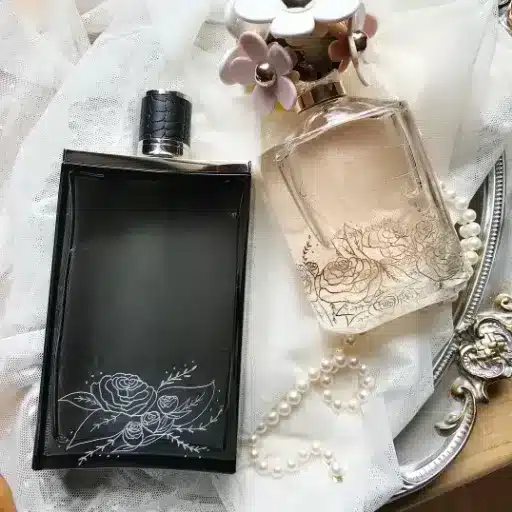
Perfume bottle customization helps brands and individual types since they want packaging that speaks to them. The process often involves selecting the material, shape, and size of the bottle. Decoration involves engraving, labels, embossing, etc., though the more and more eco-conscious are choosing recycled glass or even refillable bottles to meet their sustainability objectives. These pairs of personalized designs help brands give more attention to that customer experience, tie themselves closer to their customers’ image, and at the same time make their products more identifiable and marketable.
Personalization Options Available
The high-tech style of personalization gives rise to numerous features that cater to the customer’s specific preferences. Custom engraving and embossing add a classy touch to the products, allowing customers to personalize them with names, initials, or meaningful symbols. Custom painting offers something extra for those who want to celebrate individual colors and shades that resonate with their identity. Labeling and packaging can be further customized, with options for designs, information, or messages, depending on what the consumer wants to associate with the product. There is a marked growth in eco-conscious choices, such as reusability and biodegradability, mirroring the increase in demand for sustainable options. These choices not only provide exclusivity but also counterbalance the potential consumer’s concerns with environmental and emotional benefits.
Making a Statement with Custom Designs
Custom design will ultimately make a difference in conglomerate marketing, providing gorgeous aesthetics for brands to resonate with their audiences through innovative techniques. For instance, the use of bold colors, intricate patterns, or creative typography in packaging raises the bar for visual allure and brand recognition. Data uplift shows an increasing interest among consumers in products linked to personal touch or artistic expressions, as emotions need articulation, giving a sense of exclusivity. Further market trends also highlight how designs that align with consumers’ values on sustainability and inclusivity further cement brand loyalty. Custom design, with thoughtful execution in both aesthetics and function, remains with the brand’s consumers.
Benefits of Customized Perfume Bottles
Personalized Experience for Consumers
Custom perfume bottles bring an added aura of intimacy that allows the customer to connect. A Deloitte study supports this, stating that 36% of consumers are interested in purchasing personalized products, indicating that customization in this context is highly sought after.
Enhanced Brand Differentiation
A division of bespoke designs also helps in differentiating the brands in a saturated market. A distinct package gives the product a memorable spot in the consumer’s mind, consolidating the brand identity and enhancing desirability.
Increasing Perceived Value
Customized bottles convey prestige and exclusivity, enabling brands to further enhance their prices. Studies have shown that prices can be up to 20% higher for customized offerings compared to standard products.
Alignment with Consumer Values
Incorporating sustainable materials and eco-friendly designs when customizing bottles can be the way for brands to appeal to present-day consumers. The Nielsen study reveals that 73% of consumers worldwide would modify their purchasing behavior to reduce their environmental footprint.
Opportunities for Emotional Connection
An individual’s association between a perfume and a familiar memory or an emotion is very personal. A bottle made to order may enhance that connection, for it constitutes a keepsake worthy of being cherished rather than just an ordinary purchase in a shop.
Social Media and Sharing Appeal
Unique perfume bottles are designed for sharing networks and the organic marketing they facilitate. This visual uniqueness will also be an advantage in giving the product a voice and drawing customers toward it.
Showcasing Beautiful Bottles in Fragrance Collections
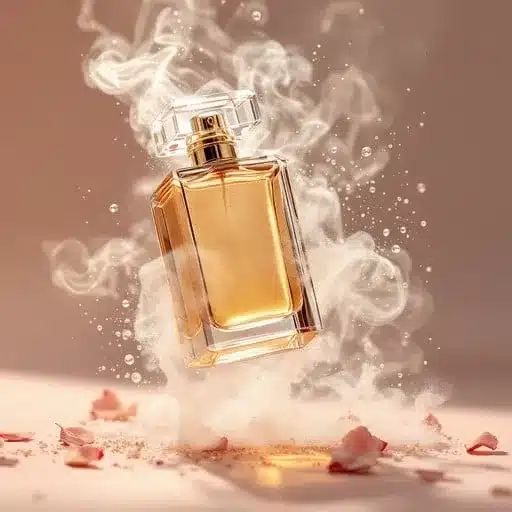
A grand appeal for fragrance collections is created through magnificent visual performances in unique bottles that are more than mere containers for the scent. These bottles embody the brand’s essence and intention through scent. The visually pleasing bottle design, intricate craftsmanship, and fine materials create an allure for customers and forge a worthy emotional attachment. Presenting those awe-inspiring bottles in an aesthetically pleasing arrangement or marketing campaign will significantly enhance the status of the collection, which would otherwise lure buyers with the act of purchasing and elevate the consumer experience.
Best Perfume Bottles of the Year
1. Chanel No. 5 Limited Edition
This year, Chanel released a limited-edition version of its flagship No. 5, presented in an alluring red Baccarat crystal bottle. The simplicity of the design, combined with its audacity, only enhances the vintage charm of the perfume glass, and it would surely allure any collector.
2. Louis Vuitton City of Stars
The Louis Vuitton City of Stars bottle dazzles with a constellation of juicy colors representing the lights of Los Angeles at dusk. The very gradient glass design stands very elegantly, putting to the forefront the spirit of the fragrance.
3. Marc Jacobs Daisy Skies Edition
The Marc Jacobs Daisy Skies Edition bottle plays out a tranquil blue motif with whimsical floral adornments on the cap. This refreshingly made-up look goes with the lively nature of the aroma contained herein.
4. Tom Ford Soleil Brûlant
The Soleil Brûlant bottle by Tom Ford is a sight to behold in terms of luxury and elegance. The exquisite, sleekness of the gold-tone metallic finish is overbold and loud in its expression of the radiant aroma inside.
5. Byredo Mixed Emotions
Byredo’s Mixed Emotions makes a mark with its modern and understated design that has a gradient black-to-clear finish. The simplicity of the bottle surely echoes the intricacy and depth of the fragrance-the perfect call for minimalists.
Collection Strategies for Unique Bottles
Building a curated collection of unique perfume bottles begins with setting clear themes or leanings that reflect your character. You might want to concentrate on limited edition designs, vintage designs, or even Nazi Lustige. Whatever your choice is, they will give your collection a voice. To find exclusive designs, get information on the most recent designer fragrances, attend industry-related events, or search niche fragrance boutiques. Stay informed by forming connections with fellow collectors through online forums or social media communities; this will offer valuable insights and give you a competitive edge in making acquisitions. Storage plays a significant role in sustaining fragrance and bottle quality. It is advisable to keep your fragrance bottles away from direct sunlight and store them in an environment with minimal temperature fluctuations. Also, coupled with a strategic approach and genuine respect for perfumery arts, collectors can build an outstanding and sentimental collection.
Displaying Your Perfume Glass Collection
Initially, a dazzling way to present your perfume glass collection would be by selecting a display method that enhances the aesthetic appeal of the pieces while preserving the materials. This might include picking out an area by yourself, such as a well-lit shelving unit, glass cabinet, or display case specially designed for that purpose. In addition to organization, intricate bottle designs are well worth showing. LED lighting does a great job, highlighting all the details without generating too much heat that could, in turn, harm the fragrances or delicate decorative elements.
Now, when putting together this creative display, arrangement will carry its charm. You might begin by grouping bottles by size, color, or style for good visual flow. Its continuous rotation might highlight a different set every time, helping to keep things interesting. Special bottles, particularly the vintage ones, will benefit from being mounted on stands or enclosed under domes to preserve their exceptional nature while keeping them safe from accidental knocks. One way to further enhance the display would be to use mirrors or other reflective surfaces behind it to complement the beauty of the collection, adding depth and sparkle. Such a display would not only present an artistically rich collection but would also become the center of attraction itself.
Reference Sources
-
- Summary: This study explores how cultural and societal influences shape the visual design of perfume packaging, particularly focusing on the use of colors.
-
Deciphering the message in the perfume bottle:
- Summary: This research delves into the semiotics of perfume bottle design, examining how material elements like shape, texture, and decoration communicate brand messages and consumer expectations. It emphasizes the storytelling aspect of bottle design.

